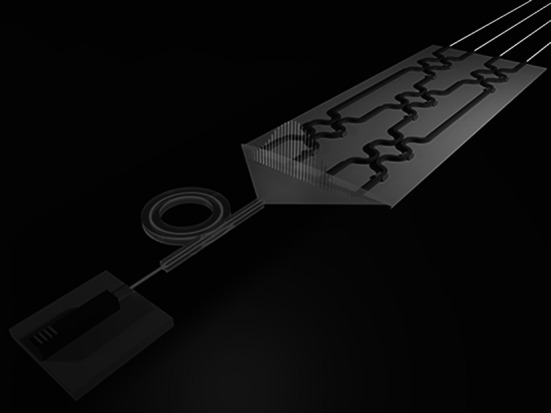- Record: found
- Abstract: found
- Article: found
Chip-Based High-Dimensional Optical Neural Network

Read this article at
Highlights
-
High-dimensional optical neural network is achieved by introducing an on-chip soliton microcomb source and wavelength division multiplexing technique.
-
The programmable electro-optic nonlinear layer and optical meshes promote the implementation of a multi-layer optical neural network.
-
Ultra-low coupling loss is realized between functional chips and fiber array, which is around 1 dB per facet.
Abstract
Parallel multi-thread processing in advanced intelligent processors is the core to realize high-speed and high-capacity signal processing systems. Optical neural network (ONN) has the native advantages of high parallelization, large bandwidth, and low power consumption to meet the demand of big data. Here, we demonstrate the dual-layer ONN with Mach–Zehnder interferometer (MZI) network and nonlinear layer, while the nonlinear activation function is achieved by optical-electronic signal conversion. Two frequency components from the microcomb source carrying digit datasets are simultaneously imposed and intelligently recognized through the ONN. We successfully achieve the digit classification of different frequency components by demultiplexing the output signal and testing power distribution. Efficient parallelization feasibility with wavelength division multiplexing is demonstrated in our high-dimensional ONN. This work provides a high-performance architecture for future parallel high-capacity optical analog computing.

Related collections
Most cited references45
- Record: found
- Abstract: found
- Article: not found
Deep learning.
- Record: found
- Abstract: found
- Article: not found
Deep learning with coherent nanophotonic circuits
- Record: found
- Abstract: found
- Article: not found